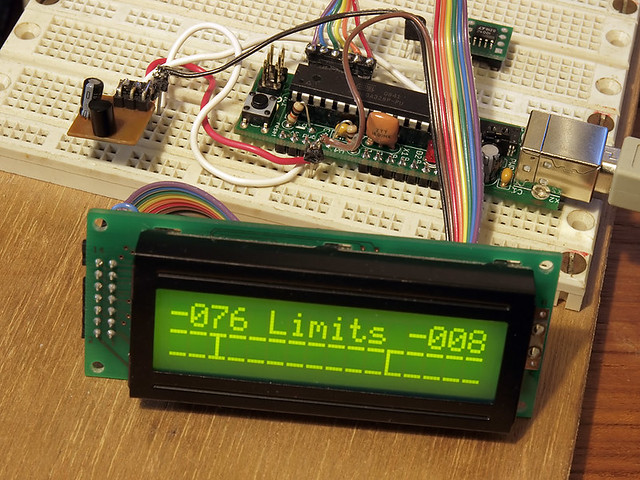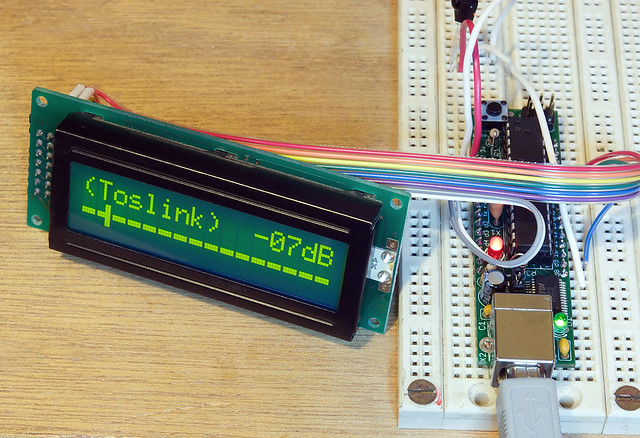for me, its not about atmel. I'm glad that controller level programming is abstracted enough to -not care- what the underlying platform is.
arduino == arduino and that's mostly what convinced me to go that route instead of PIC, for example.
the abstraction just made things so accessible. that said, arduino core is coming to ARM and so atmel architecture isn't really the important thing, long-term.
arduino == arduino and that's mostly what convinced me to go that route instead of PIC, for example.
the abstraction just made things so accessible. that said, arduino core is coming to ARM and so atmel architecture isn't really the important thing, long-term.
There is always a penalty if you program in high level language.Arduino is no exeption.
It's programmed in C/C++, but any controller can only uderstand assembler commands.So you don't know how the program was really translated into assembler and have no control over it.
This is why so many programs are buggy.
If you program in assembler then you have a total control and can do anything with that controller, but it's more complicated.
It's programmed in C/C++, but any controller can only uderstand assembler commands.So you don't know how the program was really translated into assembler and have no control over it.
This is why so many programs are buggy.
If you program in assembler then you have a total control and can do anything with that controller, but it's more complicated.
linuxworks, bargraph style can be change without any prob. I used some other stiles for tests, but yours bargraph style I like more...

that's ok. I also played with others, such as:

that was a 'gui' to let me set a min and max window by moving those 2 lines over.
and this one as a single element indicator graph:

but there's only so much you can do with the hitachi 'graphics'.
There is always a penalty if you program in high level language.Arduino is no exeption.
It's programmed in C/C++, but any controller can only uderstand assembler commands.
its rare that I have to work around the arduino core. some people do direct port io on a bunch of pins at once instead of the more abstract 'digitalRead()'. you gain speed but once you move to a mega cpu (for example) the ports are no longer the same. I always try for abstract, first; and only if the speed is not enough do I consider stepping outside the system.
or, find other hardware acceleration techniques, or even more chips.
I disagree about assembler. this isn't 1980 anymore
Yes. Thanks!Nice work!
I use only AVR's and i'am happy with themBut I don't know why so many people use atmel microprocessors.What's good on them or better said what's better then by other?
I use only Microchip PIC's and i'am happy with them.
I tried also pic, but it was much more complicated then AVR'sI tried also atmel, but it was much more complicated then PIC's, for me at least.
Generally speaking there is no difference what chip u use, everything depends on language u use for that
I will post here a new project : an Atmega IR remote transmitter that is 100% compatible with any project , that way you must not search for an compatible IR remote transmitter .
@RS232 : i will check and if there is not I will post again that firmware .
Danzup,
Have you had a chance to do this?
I built your Volume Control kit last spring and am still having problems with the remote control function.
Thanks,
Dave
About PGA4311 / TDA7439
PGA4311 :
Maybe you need to read datasheet again
Yes it have 4 input/output but not in stereo
TDA7439 :
I made code for this chip , but not a full volume controller with RC5 ect
If other like this I finish this code for M16 / lcd / RC5
Happy Christmas all
PGA4311 :
hey guys it would cooll if we could change from 2311 or 2310 to 4311 . so the use of relays is not needed
Maybe you need to read datasheet again
Yes it have 4 input/output but not in stereo
TDA7439 :
I made code for this chip , but not a full volume controller with RC5 ect
If other like this I finish this code for M16 / lcd / RC5
Happy Christmas all
PGA4311 :
Maybe you need to read datasheet again
Yes it have 4 input/output but not in stereo
TDA7439 :
I made code for this chip , but not a full volume controller with RC5 ect
If other like this I finish this code for M16 / lcd / RC5
Happy Christmas all
well for me TDA7349 rocks but need only keys and lcd.--- with out rc5, gain setting, balance setting.
can i get the bass, mid , treb, and volume up down code..
using one encoder for up down and one button as set/enter
with out power on button. i would love it,
about 7449 it dont have Mid-range tone thats TDA7439
but code is allmost the same ONLY BASS/Mid-range address is diffrent !!!!
see datasheet for both
about 7449 it dont have Mid-range tone thats TDA7439
but code is allmost the same ONLY BASS/Mid-range address is diffrent !!!!
see datasheet for both

Forgot to write that TDA7449 is 2 INPUT TDA7439 is 4 input
i saw the project in elektor for TDA7449 but the LCD used in there is not available here. adn if i order it than its quite expensive for me. could you do a code for TDA7439 based on 8515 or atmega 8,
Hi Happy Hollyday .
Yes 8515 and M8 can be used for this
Iam working on code for 7439 for the lcd / encoder
hope to finish soon
I wait for the TDA7439 chip so I can test the code about 1 week then I have it
Last edited:
cool, happy holidays, you can use proteus isis ( labcenter ) to check code squence coming on i2c port of the ic, and also the data thats coming on the LCD, and also test your codes
HI,
Yes I know proteus well
So we say M8 and 20x2 lcd or (16x2) portb
Intern clock 8Mhz (no crystal)
SDA/SCL TDA7439 portc 4/5
encoder portd 0-3 (maybe with push button)
Button menu/Select portd.4
Power On led portb.6
so you have change to make pcb
Here's one that uses an Analog Devices AD5206 RDAC and an Atmel AT2313 for stereo or AT4313 for home theater. The firmware for the home theater processor wouldn't fit into the 2313, but the 4313 is pin compatible, so they share the same schematic. The RDAC has linear pots, but a true logarithmic sequence is sent to it, providing an accurate log scale.
Merry Christmas!
Merry Christmas!
- Home
- Source & Line
- Analog Line Level
- Yet another Volume controlers and source selections